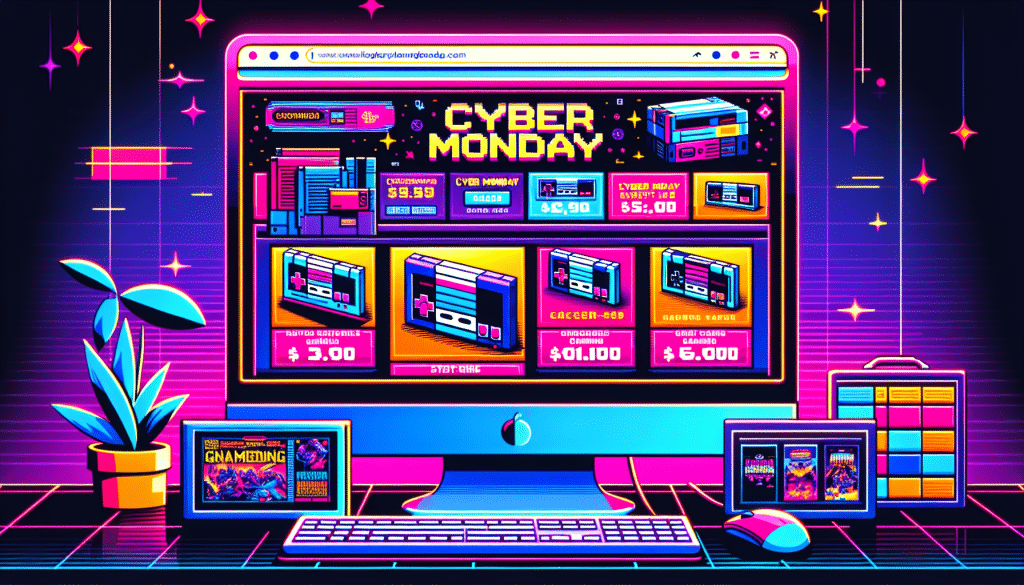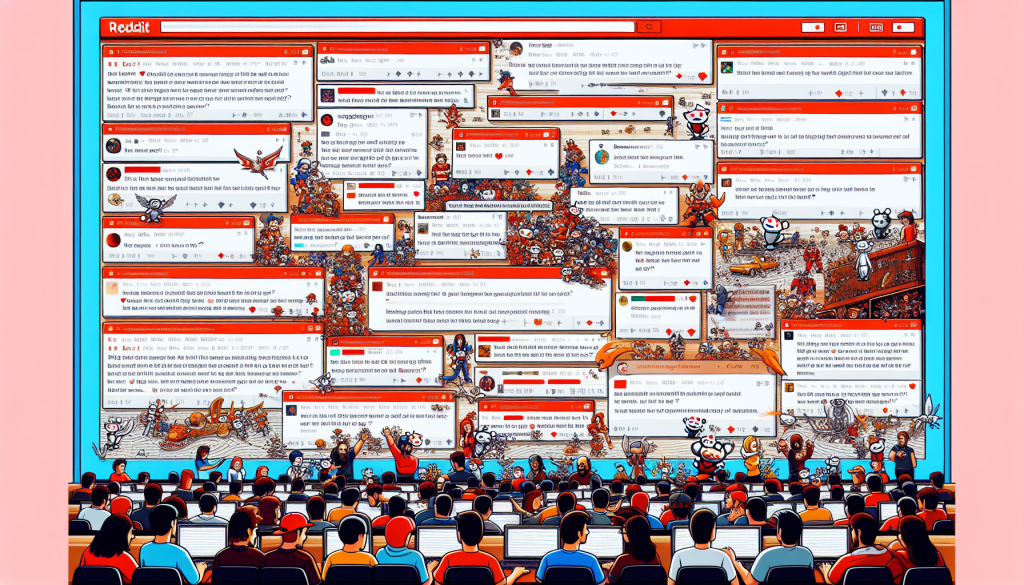The Basics of Retro Game Collecting
Are you a fan of classic video games? Do you have a nostalgic love for the games of your childhood? If so, then retro game collecting might be the perfect hobby for you! Not only can it be a rewarding and enjoyable experience, but it can also provide you with a treasure trove of gaming history.
But where do you start? How do you build your own collection of retro games? Don’t worry, we’ve got you covered. In this article, we’ll guide you through the basics of retro game collecting and help you get started on your journey to building an impressive collection.
Why Collect Retro Games?
Before we dive into the specifics, it’s important to understand why retro game collecting is such a popular hobby. First and foremost, collecting retro games allows you to relive the nostalgia of your childhood and experience the joy of playing classic titles once again.
Furthermore, retro game collecting is more than just owning a physical copy of a game. It’s about preserving gaming history and appreciating the artistry and craftsmanship of these vintage games. Each game represents a piece of gaming culture and can provide valuable insights into the evolution of the industry.
Starting Your Collection
When it comes to building your retro game collection, there are a few key things to keep in mind. First, determine which gaming systems and eras you’re most interested in. Whether you’re a fan of the Atari 2600, Nintendo Entertainment System, or Sega Genesis, it’s important to focus your collection around the platforms you enjoy the most.
Next, decide if you want to collect complete-in-box (CIB) games or loose cartridges. CIB games include the original box, instruction manual, and any other inserts, while loose cartridges are just the game itself. CIB games are often more valuable and desirable, but they can also be more expensive and harder to find.
Once you’ve determined your focus and whether you want CIB games or loose cartridges, it’s time to start searching for games. Local game stores, online marketplaces, and retro gaming conventions are great places to find retro games. Be sure to research prices and condition before making a purchase to ensure you’re getting a fair deal.
Taking Care of Your Collection
As a retro game collector, it’s important to take proper care of your games to preserve their condition and value. Here are a few tips:
- Store your games in a cool, dry place to prevent damage from humidity or extreme temperatures.
- Invest in protective cases or sleeves to prevent scratches or dust accumulation.
- Avoid touching the delicate circuitry of the game cartridges to minimize the risk of damage.
- Regularly clean your games with soft, lint-free cloths to keep them in optimal condition.
Connecting with the Retro Gaming Community
One of the best parts of retro game collecting is the community that comes with it. Connect with fellow collectors through online forums, social media groups, or local gaming events. Share your collection, discuss your favorite games, and learn from more experienced collectors. The retro gaming community is incredibly friendly and welcoming, so don’t hesitate to reach out and make new friends.
Now that you have an understanding of the basics of retro game collecting, it’s time to start your own collection. Remember to focus on the games and platforms you love, take care of your collection, and connect with others who share your passion. Happy gaming!
Identifying Valuable Retro Games
So, you’ve decided to venture into the fascinating world of retro game collecting. Congratulations! It’s a thrilling hobby that allows you to relive the nostalgia of your childhood and discover hidden gems from gaming’s past. But where do you start? How do you know which games are valuable and worth adding to your collection? Don’t worry, I’ve got you covered!
When it comes to identifying valuable retro games, there are several factors to consider. Here are some key tips to help you navigate the world of retro game collecting:
1. Rarity
- One of the most important factors that determine a game’s value is its rarity. Games that had a limited production run or were only released in certain regions tend to be more valuable.
- Keep an eye out for games that were released near the end of a console’s lifespan, as they often had lower production numbers.
2. Demand
- While rarity is essential, the demand for a game is equally important. Games that were critically acclaimed, beloved by fans, or have a cult following are more likely to be valuable.
- Research popular gaming franchises, iconic titles, or games that have achieved legendary status. These are often sought after by collectors.
3. Condition
- The condition of a game is crucial when it comes to determining its value. Games that are in pristine condition with their original packaging and manuals are generally more valuable.
- Look for games with minimal wear and tear, no scratches, and intact labels. The better the condition, the higher the value.
4. Limited Editions and Special Releases
- Games that come in limited editions or have special releases often have a higher value due to their exclusivity.
- Pay attention to collector’s editions, anniversary editions, or games bundled with unique items. These editions tend to be highly sought after by collectors.
5. Historical Significance
- Some games have a significant impact on the gaming industry or marked a turning point in gaming history. These games often hold immense value due to their historical significance.
- Do some research and familiarize yourself with pivotal moments in gaming history. Identifying games associated with these moments can lead you to valuable additions to your collection.
Remember, these are just general guidelines, and the value of retro games can fluctuate over time. It’s essential to stay up to date with market trends and be aware of any sudden spikes or drops in prices.
Lastly, don’t forget to have fun with your retro game collecting journey! It’s not just about the value and rarity of the games; it’s about the joy they bring and the memories they evoke. Build a collection that reflects your gaming passions, and don’t be afraid to explore lesser-known titles or genres.
Tips to Avoid Common Pitfalls in Retro Game Collecting
So, you’ve decided to embark on the exciting journey of retro game collecting. Congratulations! It’s a hobby that brings together nostalgia, gaming history, and the thrill of hunting for rare treasures. But, like any hobby, there are a few common pitfalls that newcomers may encounter along the way. Don’t worry though, I’m here to guide you and help you avoid these traps. Let’s dive in!
1. Do Your Research
Before you start buying retro games, it’s crucial to do your research. Familiarize yourself with the history of different consoles, popular game titles, and their values. Look into what makes a game valuable, such as limited editions, rarity, and demand. Websites and online communities dedicated to retro gaming are great resources to learn from experienced collectors and enthusiasts.
2. Quality Over Quantity
When it comes to building your retro game collection, remember that quality should always trump quantity. It can be tempting to buy a large number of games at once, especially if you come across a good deal. However, it’s better to focus on acquiring games in good condition, complete with original packaging and manuals. These complete sets hold more value and are more likely to appreciate over time.
3. Be Mindful of Counterfeit Games
Counterfeit games are a common issue in the retro gaming market. As the demand for rare games increases, so does the production of fake copies. To avoid falling victim to counterfeits, educate yourself on the telltale signs of a fake game. Check for inconsistencies in labels, poor print quality, and incorrect serial numbers. If a deal seems too good to be true, it probably is.
4. Storage and Preservation
Proper storage and preservation are essential for maintaining the value of your retro game collection. Keep your games in a cool, dry place, away from direct sunlight and extreme temperatures. Invest in protective cases or sleeves to prevent physical damage and discoloration. Regularly clean your cartridges or discs using proper cleaning methods to ensure optimal performance.
5. Connect with the Retro Gaming Community
One of the best parts of retro game collecting is the community that surrounds it. Connect with fellow collectors, attend gaming conventions, and join online forums or social media groups. Not only will you gain valuable insights and tips, but you’ll also find a supportive network of like-minded individuals who share your passion.
6. Set a Budget
Retro game collecting can become addictive, and it’s easy to overspend if you’re not careful. Set a realistic budget for your collection and stick to it. Be patient and wait for good deals or discounts instead of impulsively buying games at full price. Remember, it’s a marathon, not a sprint.
7. Don’t Forget to Play
While the excitement of collecting retro games is undeniable, don’t forget the ultimate purpose of these games: to play and enjoy them! Take the time to dust off your consoles and actually experience the games you’ve collected. Relive the nostalgia, challenge yourself, and appreciate the artistry behind these timeless classics.
Remember, retro game collecting is a journey, not just a destination. Enjoy the process of hunting for hidden gems, building your collection, and connecting with fellow enthusiasts. With these tips in mind, you’re well-equipped to navigate the world of retro game collecting and avoid common pitfalls. Happy collecting!
Encouraging Newcomers to Start Their Retro Game Collection
Are you a fan of video games? Do you have nostalgic memories of playing classic titles from your childhood? If so, then starting a retro game collection might be the perfect hobby for you! Collecting retro games is not only a fun and nostalgic pastime, but it can also be a rewarding investment. In this section, we will provide you with some tips and advice to encourage newcomers to start their own retro game collection.
1. Start with Your Favorite Console
When you first start your retro game collection, it’s a good idea to focus on one specific console that holds a special place in your heart. Whether it’s the Super Nintendo, the Sega Genesis, or the original PlayStation, starting with your favorite console will make collecting more personal and enjoyable. Plus, it will give you a clear goal and direction when searching for games.
2. Research and Learn
Before diving into the world of retro game collecting, it’s essential to do your research and learn about the market. Familiarize yourself with the most sought-after games for your chosen console, as well as their current market value. Websites, forums, and online communities dedicated to retro gaming can provide valuable insights and advice from experienced collectors.
3. Start with Common Games
When building your retro game collection, it’s important not to get discouraged by high prices or rare games. Instead, focus on acquiring more common and affordable titles to start with. Common games are usually easier to find and purchase, allowing you to build a solid foundation for your collection. As your collection grows, you can gradually add more rare and valuable games.
4. Set a Budget
Like any hobby, retro game collecting can become expensive if you’re not careful. To avoid overspending, it’s crucial to set a budget for yourself. Determine how much you’re willing to invest in your collection each month and stick to it. Remember, collecting retro games should be an enjoyable experience, not a financial burden.
5. Attend Retro Gaming Events
One of the best ways to immerse yourself in the retro gaming community and expand your collection is to attend retro gaming events. These events often feature vendors selling retro games, consoles, and accessories. It’s a great opportunity to browse through a wide selection of games and connect with fellow collectors who can share their knowledge and experiences with you.
6. Take Care of Your Collection
Once you start amassing a collection of retro games, it’s important to take proper care of them to preserve their value and longevity. Store your games in a cool and dry place to prevent damage from humidity or extreme temperatures. Furthermore, regularly clean your cartridges and discs to maintain their optimal condition.
7. Enjoy the Journey
Lastly, and most importantly, remember to enjoy the journey of building your retro game collection. It’s not just about acquiring games; it’s about reliving and preserving the magic of classic gaming. Take the time to play the games, experience the nostalgia, and share your collection with others who appreciate the beauty of retro gaming.












